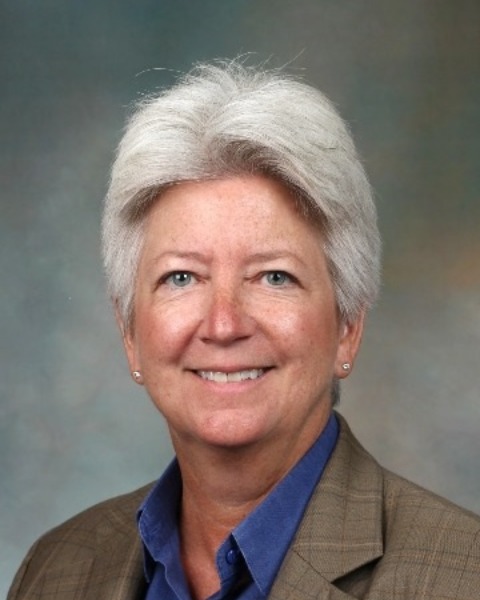Myeloma Microenvironment and immune profiling
Poster Session 3
P-394: Proteomic Analysis to Discover Bone Marrow Plasma Biomarkers Predicting Outcome Following Autologous Stem Cell Transplantation in Multiple Myeloma Patients
Friday, September 29, 2023
1:15 PM - 2:15 PM EEST

Diane F. Jelinek, PhD
Professor
Mayo Clinic Arizona
Scottsdale, Arizona, United States
Introduction: While the treatment of multiple myeloma (MM) has greatly improved, most patients eventually relapse. The time to relapse is variable with some patients relapsing within months and others remaining in remission for years. We hypothesize there are differences in the bone marrow (BM) microenvironment (ME) that underlie earlier progression; identification of factors associated with prolonged remission could be leveraged to benefit patients with early relapse. The BM ME is defined by specific cell types and proximity to MM cells and the rich array of plasma proteins, including those with regulatory activity impacting residual MM cell growth and survival. In this study, we analyzed BM plasma samples from MM patients with differing clinical outcome to identify plasma biomarkers that predict outcome at d100 post-autologous stem cell transplant (ASCT).
Methods: Two different proteomic platforms were used. The SomaLogic platform is aptamer-based and measures 7000 proteins. For the SomaLogic studies, BM plasma samples were collected (2006-2019) from 104 MM patients ~d100 post-ASCT. Poor responders (PRs; n=38) were defined as relapsing < 2yr after ASCT with or without lenalidomide maintenance treatment (MT) and good responders (GRs) were defined as those who remained progression free for >2yr if not put on MT and >4yr if placed on MT (n=66). The Olink Explore 3072 platform uses proximity extension assay technology coupled with NGS and measures 3000 proteins. For the Olink studies, BM plasma samples from an independent cohort of MM patients (40 PRs and 40 GRs) were collected at ~d100 post-ASCT (2017-2018), all of whom received MT post-ASCT. Initially, the top principal components of the most variable features were clustered via nearest neighbor routines to identify potential non-biological groupings in both sets of proteomic data. Subsequently, differential expression via limma was performed to identify the most significantly up-regulated and down-regulated features for PRs after controlling for the non-biological groupings.
Results: Notably, an abundance of cytokines was observed in PRs at ~d100 using both platforms. In the SomaLogic data, key genes within the cytokine-cytokine receptor interactions pathway were identified among the top 50 up-regulated proteins including CXCL10, IL18, IL21R, CXCL14, and IL17RB. The Olink data also showed up-regulated proteins in the PRs were related to cytokines and included CXCL1, CXCL8, CXC11, and IRAK4. We also explored possible effects of residual plasma cells (PCs) present at ~d100 post-ASCT. After adjusting for the % of PCs present, we still observed CXCL1, CXCL8, and CXCL11 in the top 50 up-regulated proteins.
Conclusions: Our data suggest that the BM plasma cytokine milieu in MM patients post-ASCT may indicate which patients are more likely to progress. Our data further suggest that the association between chemokines and poor prognosis is largely independent of tumor involvement and may largely reflect the BM ME instead.
Methods: Two different proteomic platforms were used. The SomaLogic platform is aptamer-based and measures 7000 proteins. For the SomaLogic studies, BM plasma samples were collected (2006-2019) from 104 MM patients ~d100 post-ASCT. Poor responders (PRs; n=38) were defined as relapsing < 2yr after ASCT with or without lenalidomide maintenance treatment (MT) and good responders (GRs) were defined as those who remained progression free for >2yr if not put on MT and >4yr if placed on MT (n=66). The Olink Explore 3072 platform uses proximity extension assay technology coupled with NGS and measures 3000 proteins. For the Olink studies, BM plasma samples from an independent cohort of MM patients (40 PRs and 40 GRs) were collected at ~d100 post-ASCT (2017-2018), all of whom received MT post-ASCT. Initially, the top principal components of the most variable features were clustered via nearest neighbor routines to identify potential non-biological groupings in both sets of proteomic data. Subsequently, differential expression via limma was performed to identify the most significantly up-regulated and down-regulated features for PRs after controlling for the non-biological groupings.
Results: Notably, an abundance of cytokines was observed in PRs at ~d100 using both platforms. In the SomaLogic data, key genes within the cytokine-cytokine receptor interactions pathway were identified among the top 50 up-regulated proteins including CXCL10, IL18, IL21R, CXCL14, and IL17RB. The Olink data also showed up-regulated proteins in the PRs were related to cytokines and included CXCL1, CXCL8, CXC11, and IRAK4. We also explored possible effects of residual plasma cells (PCs) present at ~d100 post-ASCT. After adjusting for the % of PCs present, we still observed CXCL1, CXCL8, and CXCL11 in the top 50 up-regulated proteins.
Conclusions: Our data suggest that the BM plasma cytokine milieu in MM patients post-ASCT may indicate which patients are more likely to progress. Our data further suggest that the association between chemokines and poor prognosis is largely independent of tumor involvement and may largely reflect the BM ME instead.
